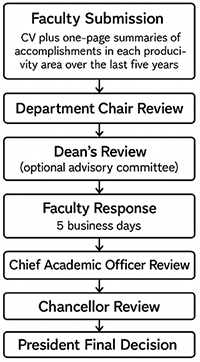Fair and equitable evaluation of our productivity requires that we establish transparent expectations. The IUI campus already has detailed effort distribution guidelines and expectation rubrics, but IUB has not. This past semester, an IUB campus-wide task force drafted guidelines for workload effort distribution for tenured and tenure-track faculty. Effort distribution guidelines for non-tenure-track faculty will be developed later.
While the work of a full-time faculty member routinely extends beyond 40 hours per week, the standard distribution of effort for tenure-track/tenured faculty across the university is:
- 40% teaching, where one “average” 3-credit course is equivalent to a 10% effort over the academic year.
- 40% research/creative activity
- 20% service
This distribution varies based on career stage, disciplinary norms, scholarly leadership commitments, and unit needs. For example, at IU Indy, the current 40/40/20 guidelines are implemented as follows. On average, tenured IUI faculty teach four courses a year, publish consistently in peer-reviewed venues, submit or lead external grants, and actively serve on a couple of internal or external committees and/or service assignments. More research-active faculty have reduced teaching loads (three courses a year), but have higher expectations in research with multiple grants, several graduate student advisees, and/or more publications in higher-impact venues, as specified by the different disciplines. This results in a workload distribution of 30/50/20. IUB faculty are expected to teach three courses a year and focus more on research. Therefore, their standard workload expectation is closer to 30/50/20.
This coming semester, each department will need to review and/or redefine what activities constitute teaching, research, and service, and establish typical expectations for each domain to come into compliance with BOT-24 without compromising disciplinary expectations and norms. Of course, deviations from the accepted baseline expectations will be allowed to account for career stage, scholarly leadership, personal circumstances, unit needs, and other relevant factors, and must be documented and approved annually. For example, a department chair carrying a 50% service load and teaching one course would have their workload expectation as 10/40/50.



